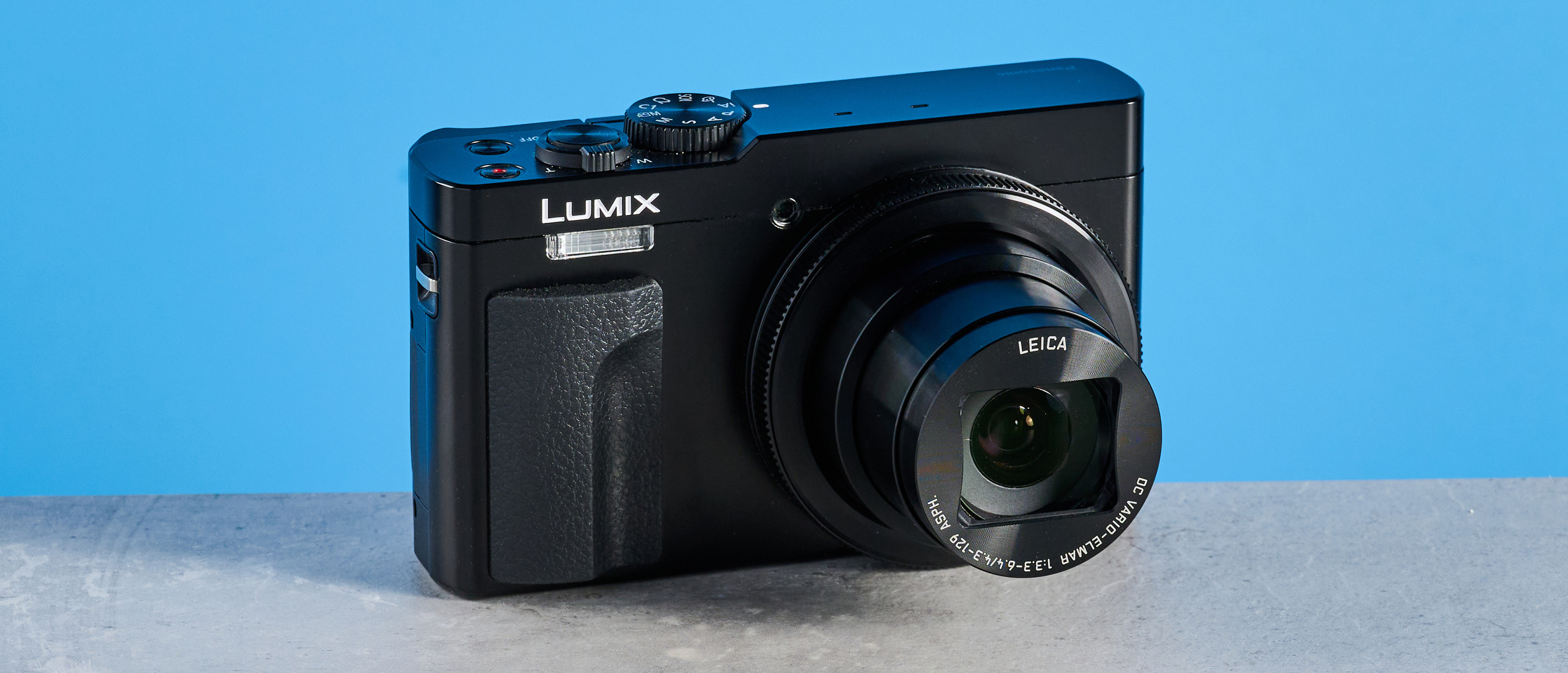Walking dogs in the snow — 6 essential safety tips
Protect your dog's paws in the snow with these useful safety tips
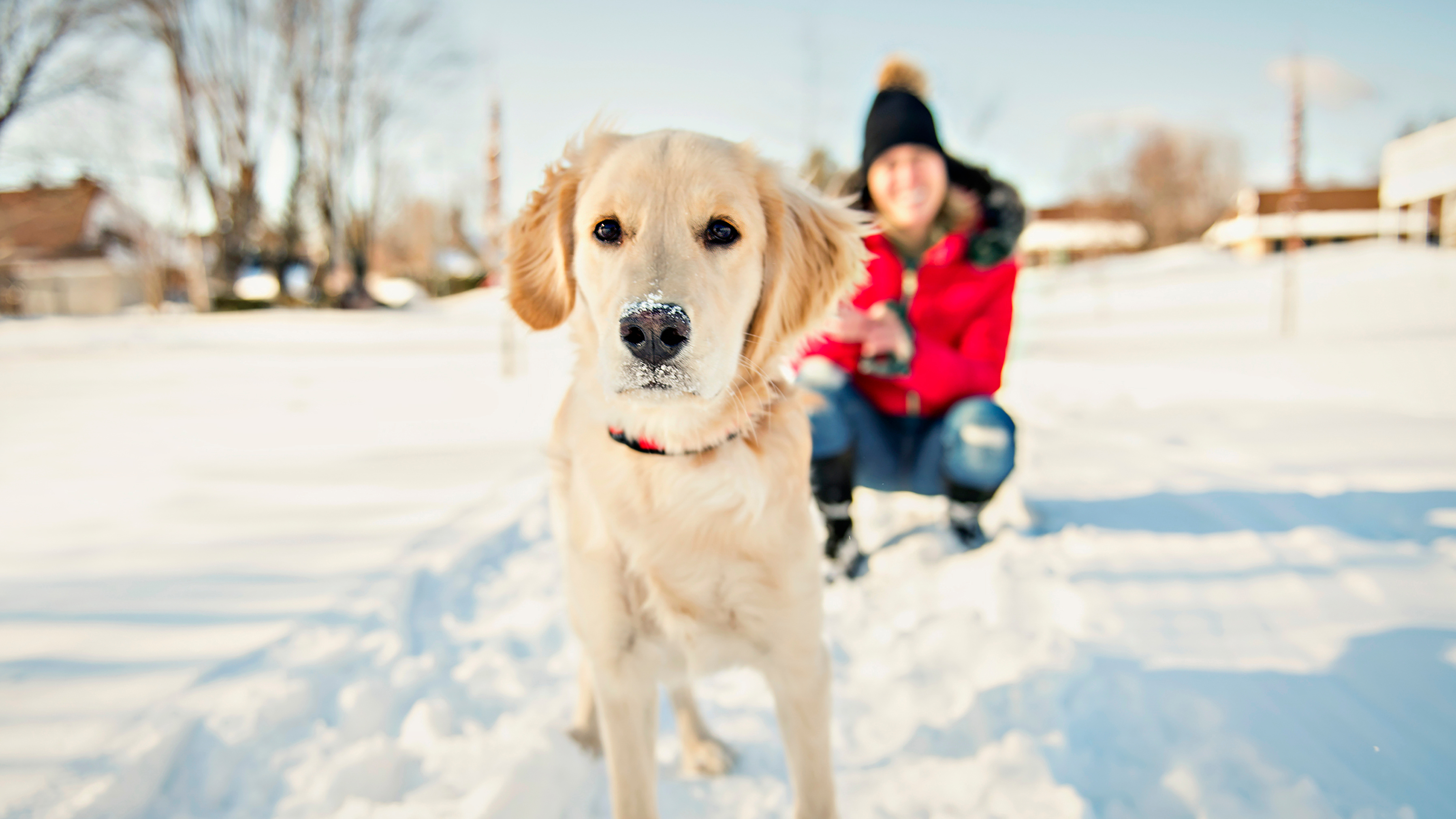
Walking your dog in the snow sounds like fun, but it does come with its challenges. Because of the low temperatures, icy conditions and shorter days, taking your dog out at this time of year can be quite hazardous. Frostbite and hypothermia are just a few possibilities and antifreeze can often be found on the ground, so you need to take precautions.
Generally speaking, dogs love the snow and can handle the lower temperatures it brings. Plus, walking your dog is essential to keep up regular exercise — so, it’s important that you still take your pooch out so long as it’s safe. Here are six safety precautions you should take when walking your dog in the snow. (And after you're done with your walk, why not warm yourself up by learning how to make hot chocolate?)
Have you noticed your pup's ears have started to smell? That's a sign that they might need some TLC. Here's how to clean dog ears for guidance.
1. Protect paws
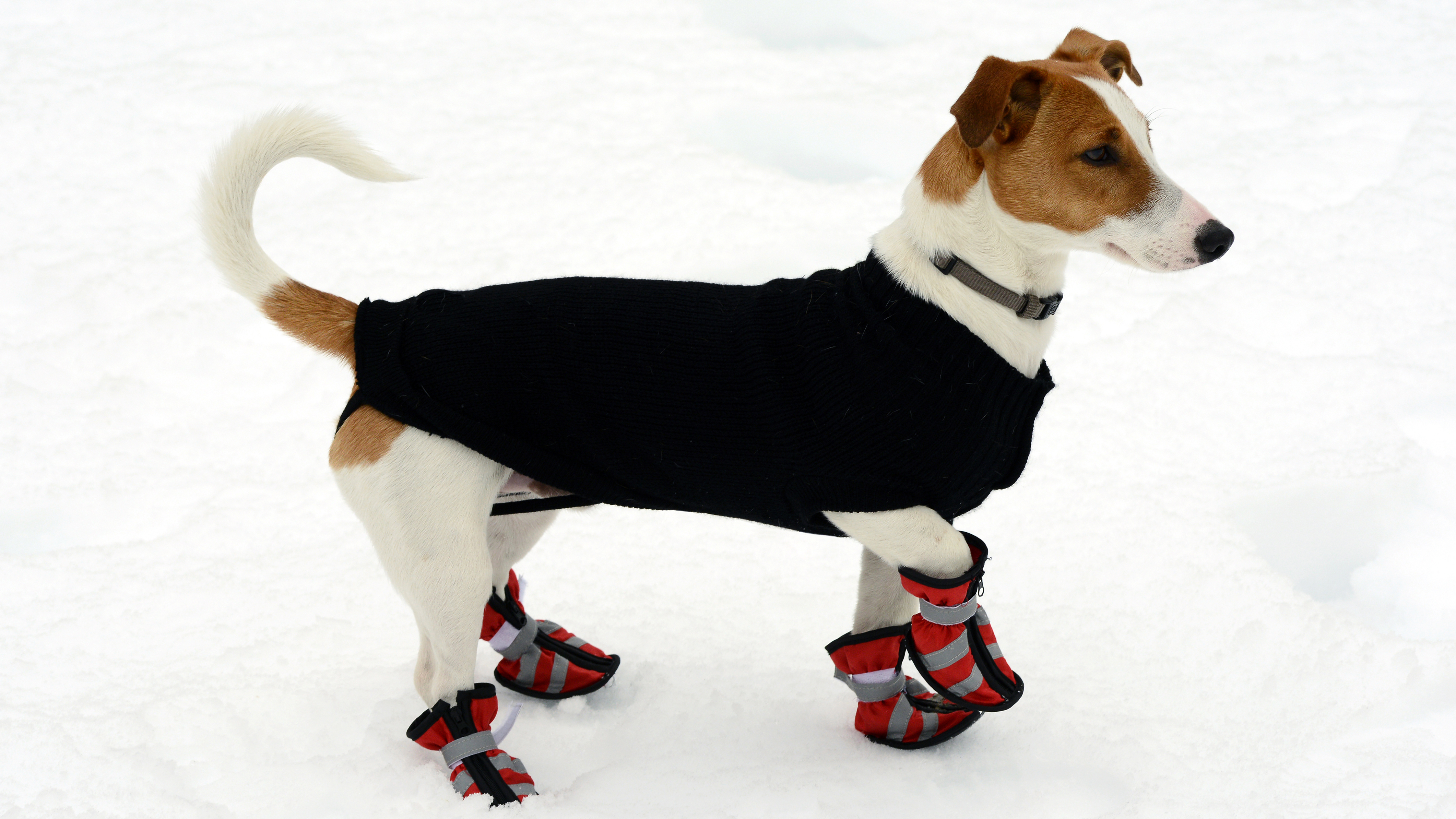
Dashing through the snow can expose your pooch’s paws to ice balls, melting salts, and harmful chemicals — not to mention frostbite. Protect paws with winter dog booties or rubber boots to prevent icy particles and snow forming between toes and the pads of their paws. We recommend the Breathable Dog Walking Shoes ($21, Amazon) or the Pawz Waterproof Dog Boots ($14, Chewy) to protect wet paws.
If you have a fussy pup who doesn’t like wearing anything on their feet, you can coat paws with a protective wax-cream, such as Paw Pad Protection Balm ($11.99, Amazon) instead. Just remember to wipe your pooch’s paws thoroughly before going back indoors.
2. Wrap pups up warm
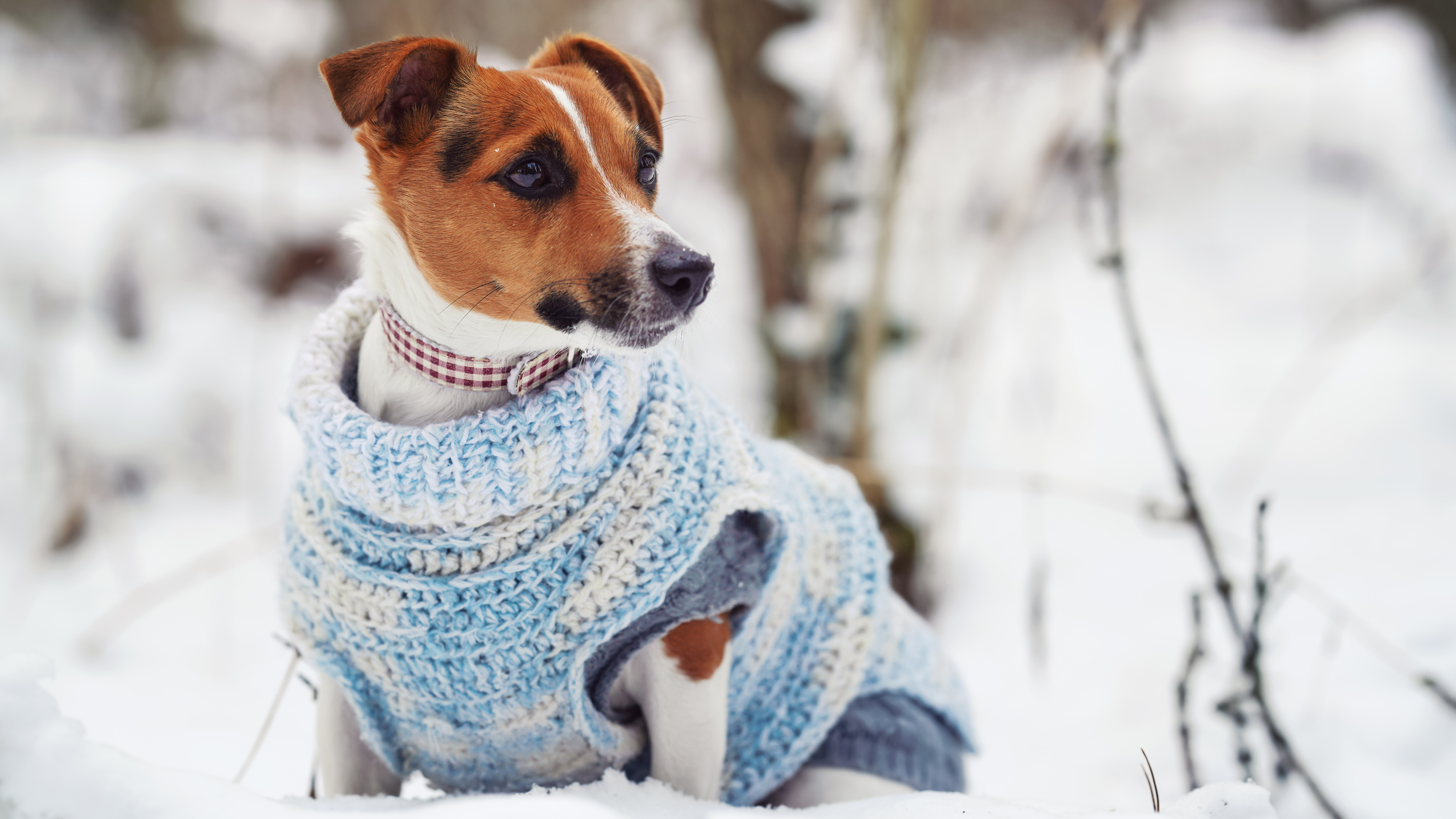
While most dogs cope pretty well in the cold, there are certain small breeds that are susceptible to colder temperatures. These include pups with short coats or those with low body fat.
Protect pups with a water-resistant coat or sweater to keep them extra warm and to prevent them from shivering during winter walks. We recommend the Jecikelon Pet Dog Clothes ($9, Amazon) if you need inspiration.
Sign up to get the BEST of Tom's Guide direct to your inbox.
Get instant access to breaking news, the hottest reviews, great deals and helpful tips.
3. Keep pups on a leash in the snow
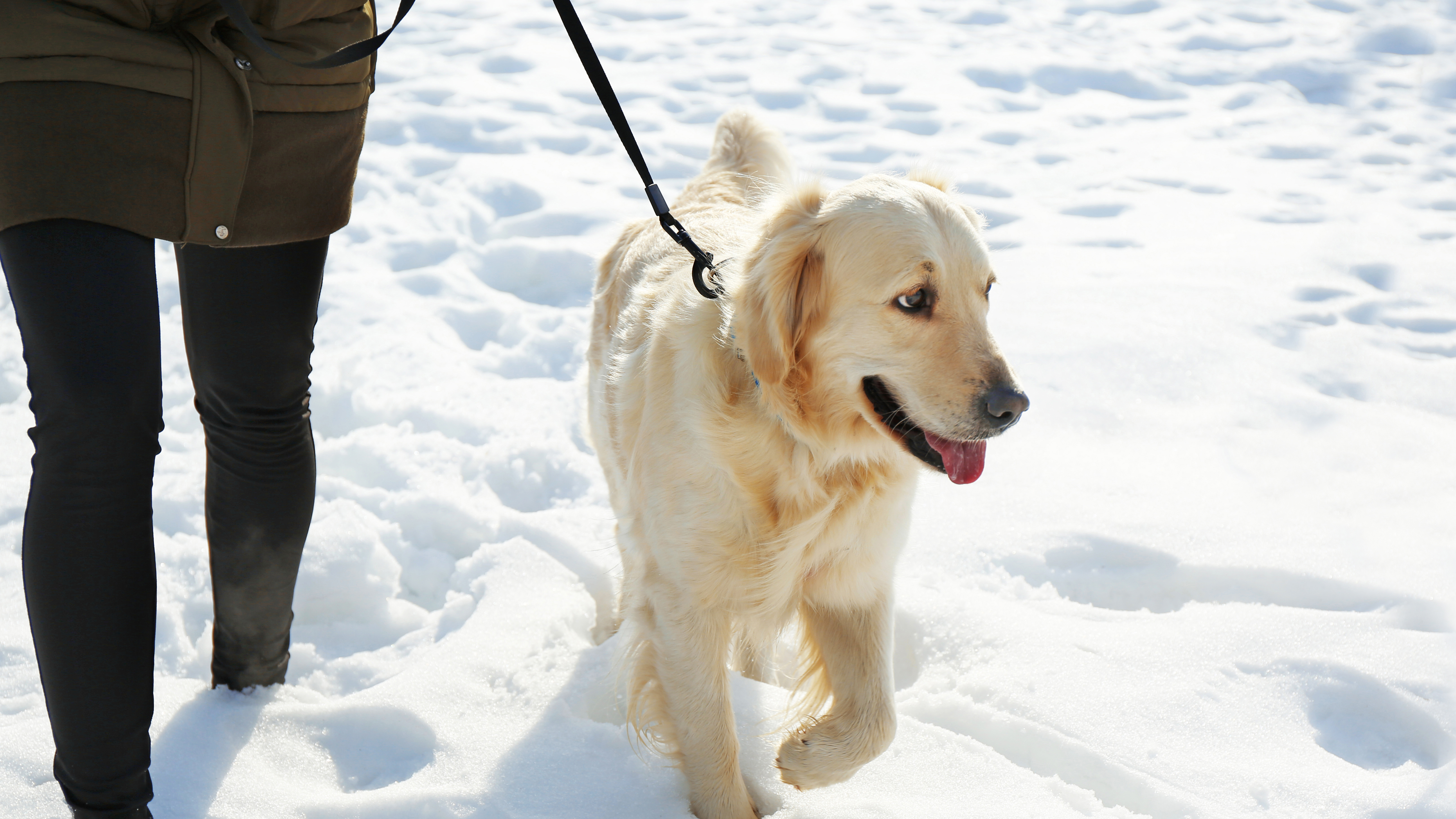
While dogs love nothing more than to run around and frolic in the snow, there are a number of dangerous things to be mindful of. Besides slipping and falling, our excitable canines could unwittingly run into frozen lakes or pools of water and risk falling through the ice.
It’s always best to keep dogs on a leash while walking through snow, and keep to plowed sidewalks to avoid hidden dangers.
4. Keep dogs away from antifreeze, salt and other dangerous chemicals
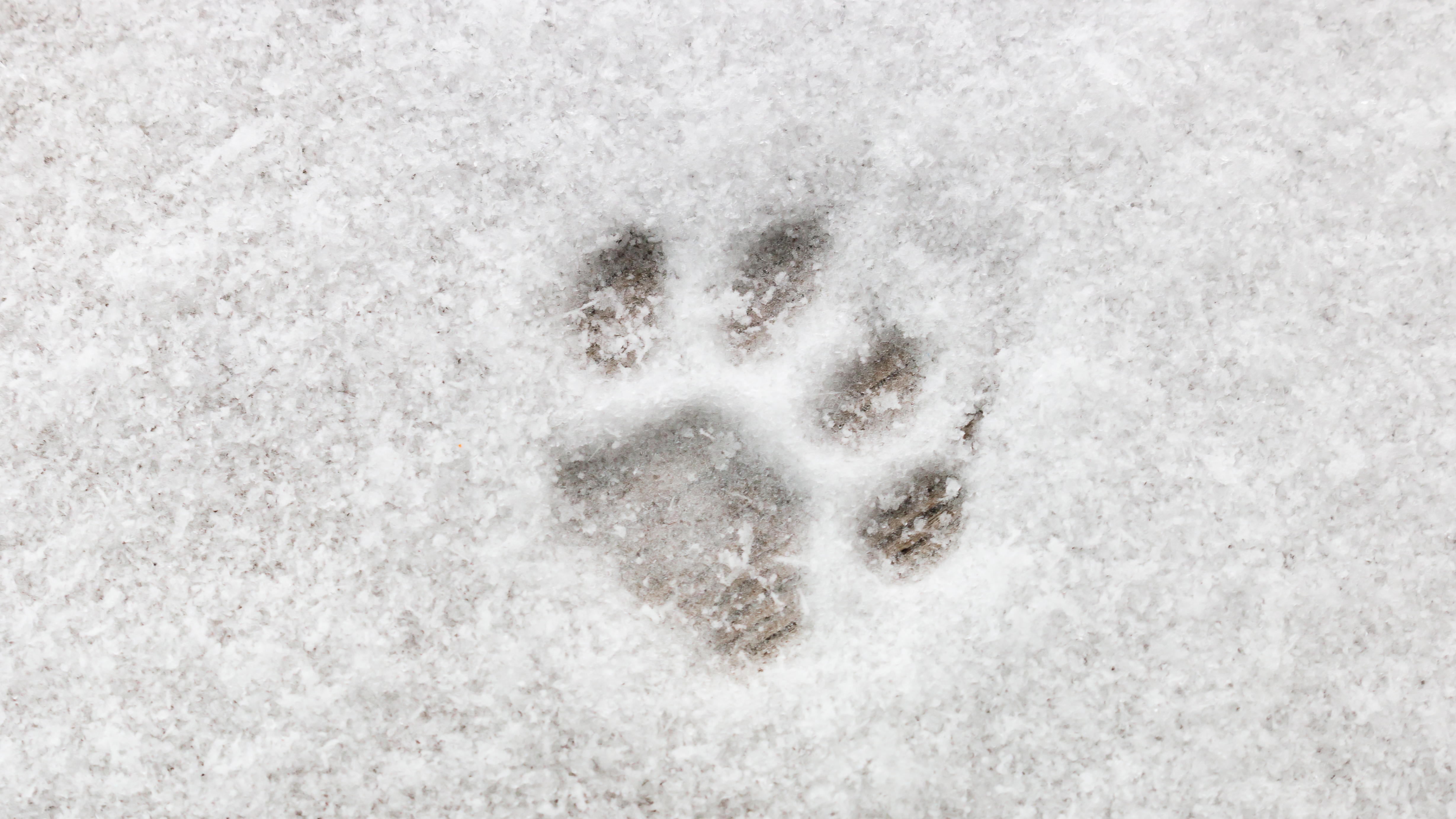
It’s common for salt or antifreeze to be used to melt ice on the ground, however these toxic chemicals could be fatal for dogs if ingested. Antifreeze in particular has a sweet taste that can attract pups, so avoid walking through areas with puddles of spilled-over antifreeze, and rinse their paws as soon as you get in. This is to prevent them from licking their paws and ingesting harmful chemicals.
Similarly, salt grit used to dissolve snow can irritate your dog’s skin, and may cause burns on paws after prolonged contact. There are pet-safe alternatives though if you're wondering how to remove ice from a driveway.
5. Don’t let your pooch eat the snow
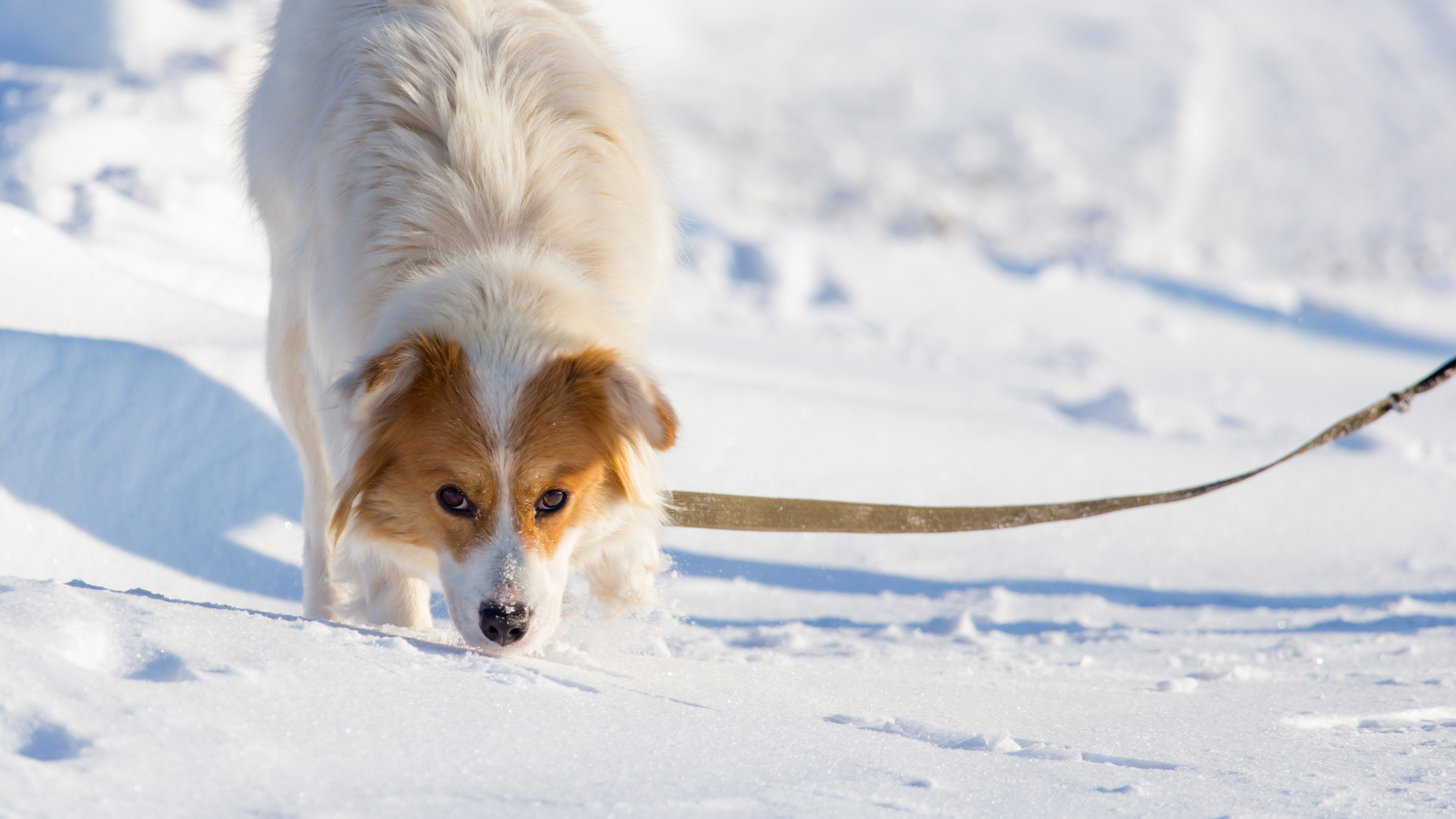
Although it may be tempting for your pooch to munch on the appealing snow, this could be dangerous for their health. Not only can it lower the body's temperature which can cause serious hypothermia, but it can also contain sharp objects or harmful chemicals, such as melting salt.
6. Limit the time when walking your dog in the snow
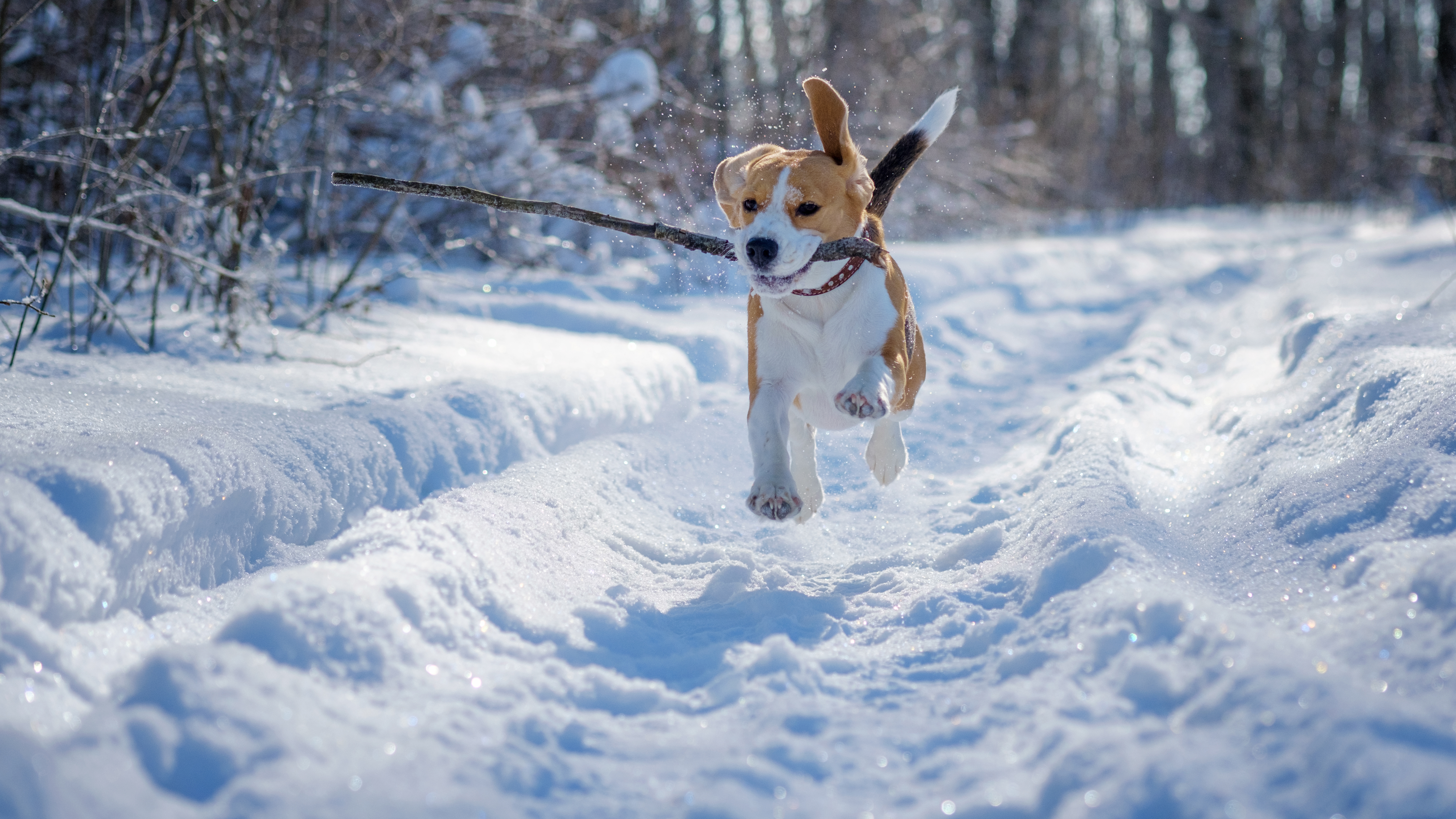
If you have a daily routine, limit the amount of time you spend walking in the snow with your pooch. This will prevent frostbite, hypothermia or any other consequences of exposure to cold air. In addition, always look out for signs of anxious behavior, including whining, stopping, slowing down or excessive shivering.
If you do notice any of these, you should head back indoors immediately, and keep towels by the door to dry them off thoroughly. What’s more, dogs with specific health conditions such as thyroid disease or chronic lung problems, should have limited exposure during winter walks.
In addition, always carry a flashlight with you during walks. As the days grow darker much earlier, a flashlight will be helpful in times of low visibility or extreme weather conditions.
How long can I walk my dog in the winter?
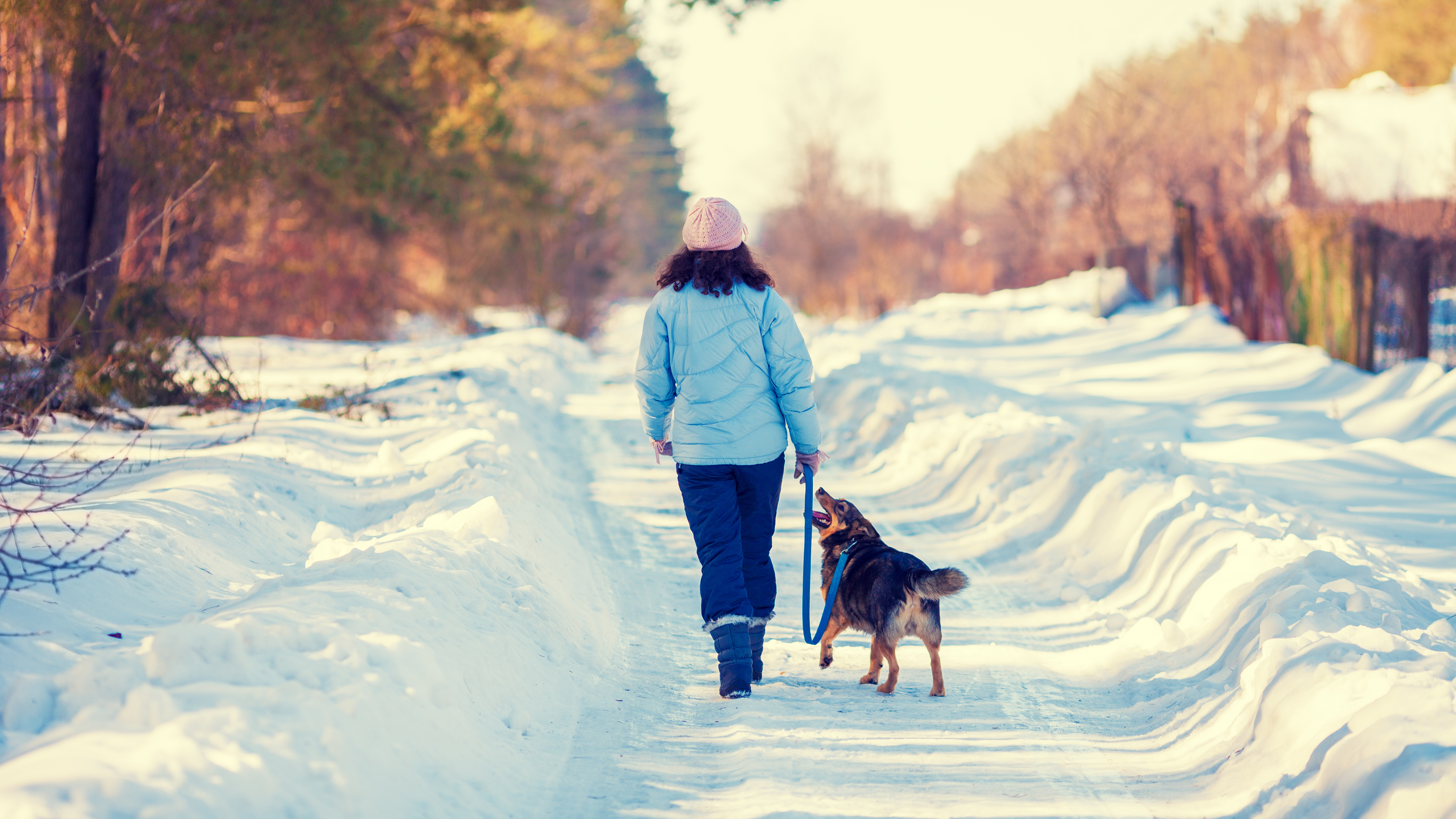
During colder months, most healthy medium or large dogs can walk for 30 minutes in temperatures above 20 degrees Fahrenheit, while smaller pups should ideally walk from 15 to 20 minutes if the temperature is between 20 to 32 degrees Fahrenheit. Of course, if it's below 0 degrees, it’s advisable not to walk your dog at all to avoid hypothermia.

As the Homes Content Editor, Cynthia Lawrence covers all things homes, interior decorating, and garden-related. She has a wealth of editorial experience testing the latest, ‘must-have’ home appliances, writing buying guides and the handy ‘how to’ features.
Her work has been published in various titles including, T3, Top Ten Reviews, Ideal Home, Real Homes, Livingetc. and House Beautiful, amongst many.
With a rather unhealthy obsession for all things homes and interiors, she also has an interior design blog for style inspiration and savvy storage solutions (get rid of that clutter!). When she’s not testing cool products, she’ll be searching online for more decor ideas to spruce up her family home or looking for a great bargain!
